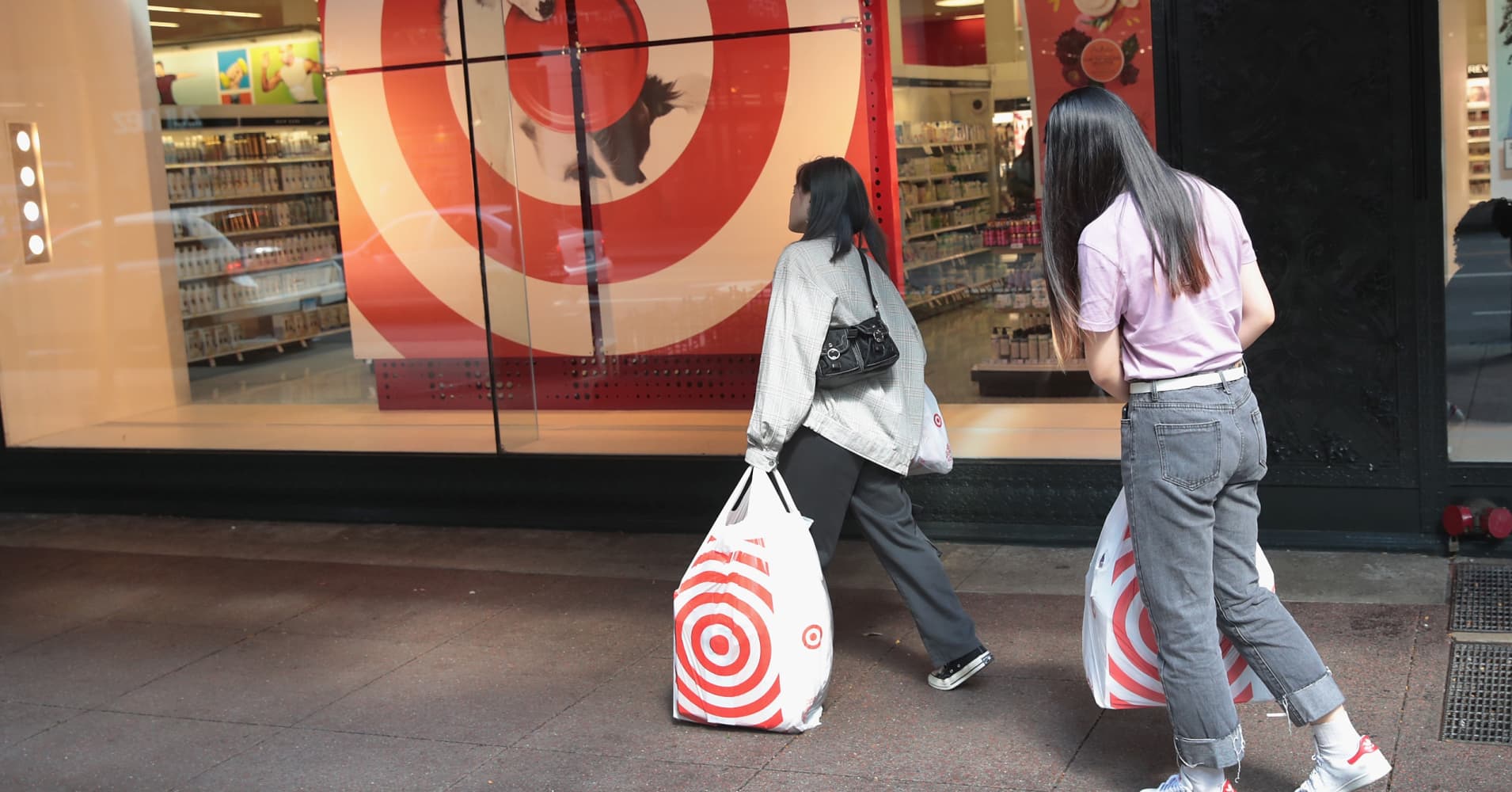Hits: 54

Target delivered better-than-expected earnings during the critical holiday sales period as the retailer’s in-house brands and easy delivery options drew its strongest traffic and same-store sales growth in more than a decade.
Squawk Box” after the company released its earnings Tuesday. “And I think that we saw that in our full year 2018 results, but more importantly the guidance for next year.”
Here’s what Target reported for the fiscal fourth quarter ended Feb. 2 compared with what analysts were expecting, based on average estimates compiled by Refinitiv:
- Earnings per share, adjusted: $1.53 vs. $1.52 expected
- Revenue: $22.98 billion vs. $22.96 billion expected
- Same-store sales: up 5.3 percent vs. growth of 5.1 percent expected
On an unadjusted basis, net income fell 26.5 percent to $799 million, or $1.52 a share, during its fiscal fourth quarter ended Feb. 2 from $1.1 billion, or $1.99 a share, the period the previous year, which included one less week. Revenue was about flat at $23 billion.
Sales at Target stores open for at least 12 months were up 5.3 percent, with bricks-and-mortar store sales growing 2.9 percent, while online sales were up 31 percent. That was better than expected growth of 5.1 percent. The company said its e-commerce business contributed 2.4 percentage points to overall same-store sales growth during the quarter.
“We continue to see great performance both from a store standpoint and a digital standpoint,” Cornell said on CNBC.
For the year, total same-store sales increased 5 percent, the strongest growth since 2005. Target’s e-commerce sales climbed 36 percent in 2018.
“While we’d described 2018 as a transition year, it also turned out to be one of the most productive in our history,” CFO Cathy Smith said at the company’s investor day in New York on Tuesday.
The number of overall transactions at Target rose 5.3 percent during the fourth quarter, compared with growth of 3.6 percent a year earlier. And the average transaction amount grew 0.8 percent, better than growth of 0.4 percent last year. Traffic was up 4.5 percent.
Looking to fiscal 2019, Target says it anticipates a low-to-mid single-digit increase in same-store sales, and a mid-single digit increase in net income. It’s calling for adjusted earnings of between $5.75 and $6.05 per share. Analysts had been expecting earnings per share of $5.61.
The company plans to remodel about 300 stores in 2019 and another 300 in 2020. It will also open more small-format stores in cities and on college campuses this year. COO John Mulligan named Santa Barbara, Cape Cod, Washington, D.C. and Seattle as some of the destinations that will soon have smaller locations.
Target’s holiday-quarter results are a sign that its investments in store remodels and delivery services are paying off. That’s a strategy the Minneapolis-based company is sticking to, as department store chains continue to struggle and other mall-based retailers like Gap and Charlotte Russe shut stores across the country.
“There is no billion dollar surprise for today, no major new initiative,” Cornell said at the company’s investor day. “We don’t need it.”
Big-box retailers Target and Walmart, for the most part, have been immune to the sales slumps that other companies are facing. Walmart grew its e-commerce sales a whopping 43 percent during the fourth quarter.
Target had been working to pick up market share from now-liquidated Babies R Us and Toys R Us, a strategy that succeeded during its fourth quarter. However, selling a higher volume of baby goods and toys didn’t help improve the company’s bottom line all that much since those items sell at lower profit margins. The retailer expects the strength in those categories to continue in the first quarter.
Target’s recent digital initiatives, store makeovers and private brand development, coupled with “a continued healthy consumer backdrop” and favorable weather this spring, bode well for continued same-store sales growth, Gordon Haskett analyst Chuck Grom said ahead of Tuesday’s report.
To stay competitive, Target has been investing in rolling out more in-house brands. It will soon launch three new lingerie and sleepwear brands to rival Victoria’s Secret. It continues to sign deals with popular fashion lines to collaborate on exclusive merchandise to be sold in Target stores; its latest is with Vineyard Vines.
Target also is getting more competitive with Amazon. It’s starting to invite select specialty brands and national retailers to sell on its website via a third-party marketplace, called “Target +.” The company says it hopes this approach will help relieve pressure on profit margins, as it will be able to pass on shipping costs and some other expenses to incoming third-party sellers.
Be the first to comment